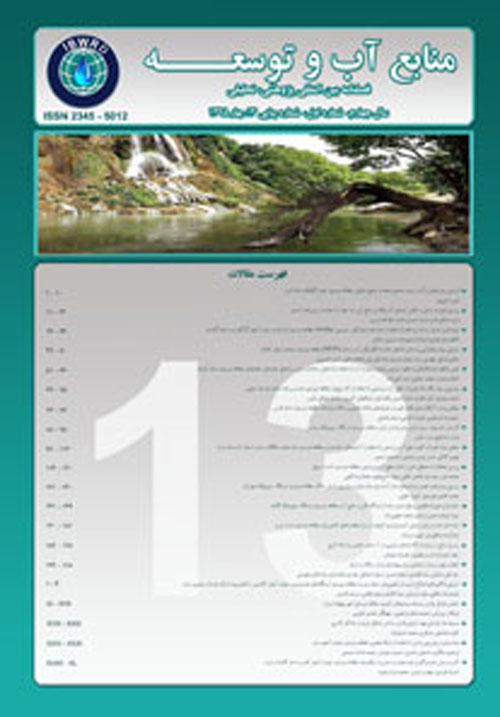An Analysis of Flowing Pattern around T-shaped Spur Dike at 90° Arc, Based on Fluent and Flow-3D Models
Author(s):
Abstract:
In this paper the analysis of scouring has been analyzed، which usually takes place in river bends at high speeds. River’s spur dikes are considered as important organizing structures of rivers. Spur dikes are cross-over structures which expand from river bank to flowing axis and deflect or direct flow to river’s central axis. The spur dikes are formed individually or in subsequent series in one or both sides of the river. In this paper، the analysis of the flow speed and scouring around T-shaped spur dike at 90 degrees arc، have been considered. A three-phase flow simulation of air، water and sediment was used based on the VOF model via fluent and flow-3D software’s. Using these software’s، scouring phenomenon was examined for three different volume rates. Observations suggested the spur dike affected topography of the arc bed due to the flow pattern of the secondary flow and formation of another secondary flow in the opposite direction of the main secondary flow. Results clearly showed that as the volume rate goes up، the scour rate in the external arc and sedimentation rate in internal arc increases. Results also revealed that in a no-spur dike in the arc، scouring rate was five times more than when there was a spur dike.
Keywords:
Flow , 3D model , Flow Pattern , Fluent Model , Scour , T , Shaped Spur Dike
Language:
English
Published:
International Bulletin of Water Resources and Development, Volume:3 Issue: 3, 2016
Page:
1
https://www.magiran.com/p1487049
سامانه نویسندگان
اطلاعات نویسنده(گان) توسط ایشان ثبت و تکمیل شدهاست. برای مشاهده مشخصات و فهرست همه مطالب، صفحه رزومه را ببینید.
مقالات دیگری از این نویسنده (گان)
-
Investigating the Hydraulic Efficiency of the Labyrinth Weir Using the Flow3D Numerical Method
R. Daneshfaraz, M. Majedi Asl*, T. Omidpour Alavian
Journal of Hydrology and Soil Science, Spring 2025 -
Application of intelligence models based on soft computing in investigating the discharge coefficient of the sluice gate under free-flow condition and symmetrical sill with the help of KNN, ANN, GEP and SVM models
H.R. Abbaszadeh, Y. Hassanzadeh *, R. Daneshfaraz, R. Norouzi
Sharif Journal Civil Engineering,



